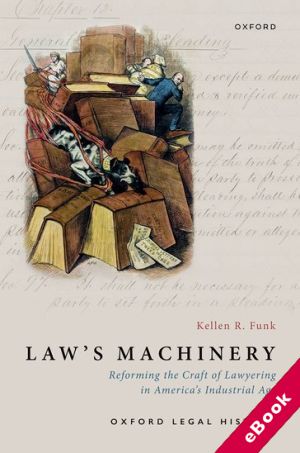
The device(s) you use to access the eBook content must be authorized with an Adobe ID before you download the product otherwise it will fail to register correctly.
For further information see https://www.wildy.com/ebook-formats
Once the order is confirmed an automated e-mail will be sent to you to allow you to download the eBook.
All eBooks are supplied firm sale and cannot be returned. If you believe there is a fault with your eBook then contact us on ebooks@wildy.com and we will help in resolving the issue. This does not affect your statutory rights.
It was perhaps fitting that in an age of industrialization, Americans began to think of the law as a tool, one that could be forged to fit their needs, without regard to the traditional ways of litigating cases in court. Law's Machinery explores how innovators like New York attorney David Dudley Field, and his associates across the elite American bar, legislated a "code of practice" and attempted to rebuild the practice of law from the ground up in the mid-nineteenth century. While many of their efforts proved futile or misguided, the codifiers ultimately succeeded in turning American law into a machine run by, and in the interests of, professional lawyers like themselves. Often overlooked by histories of the world's famous code systems, the United States settled on a code of practice that elevated lawyers as the dominant force of the country's legal institutions.
Professor Funk's account ranges widely: from the Jacksonian Era to the end of the Gilded Age; from urban Gotham to the peripheries of the American West and the Reconstruction-era South; and from the parlours of Brooklyn pastors and merchants to the ornamented courthouses of Wall Street. Drawing on innovative methods in digital legal history, Law's Machinery offers a sweeping intellectual, cultural, and political telling of the modernization of American legal practice.